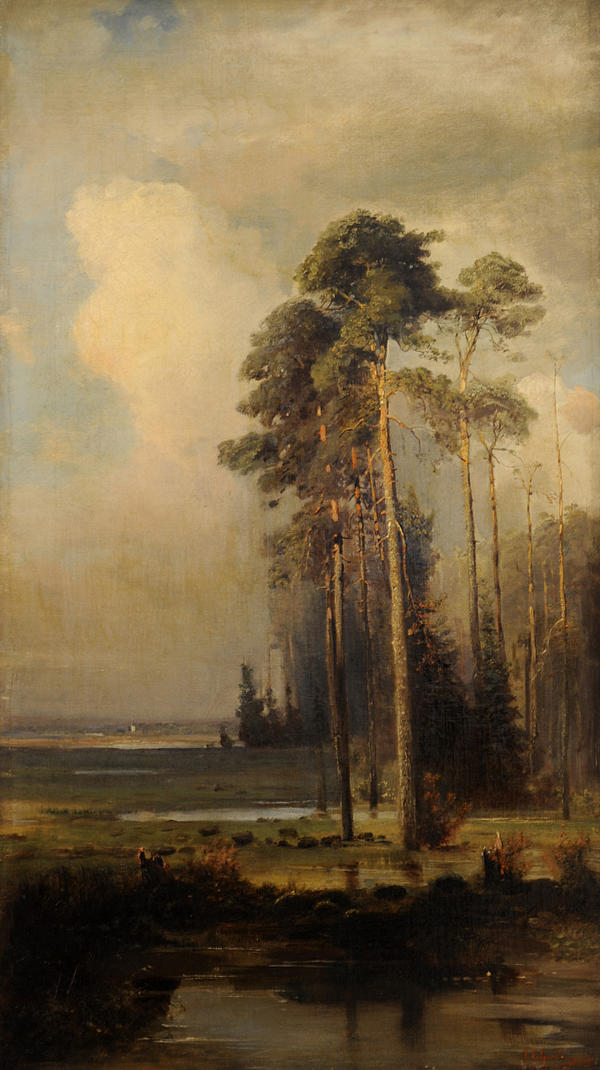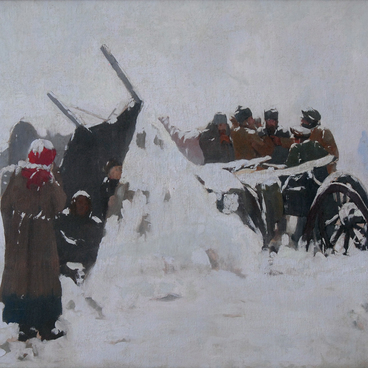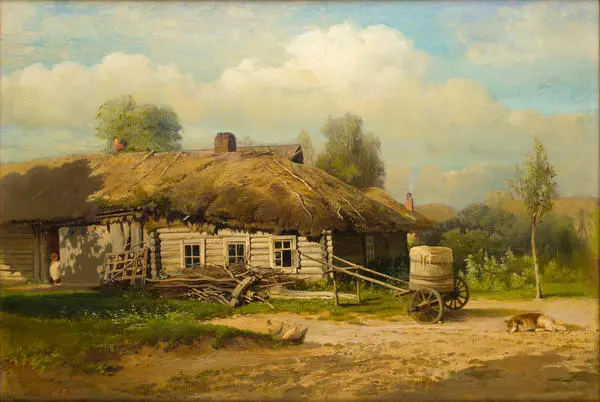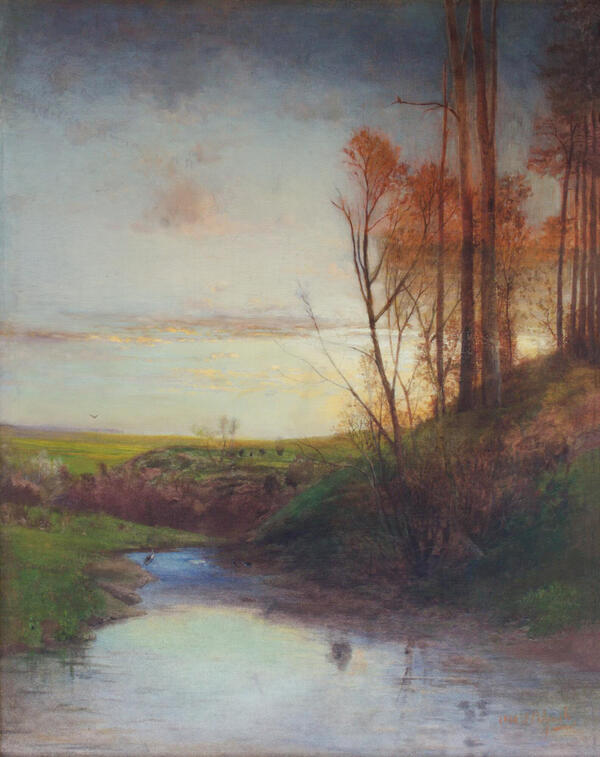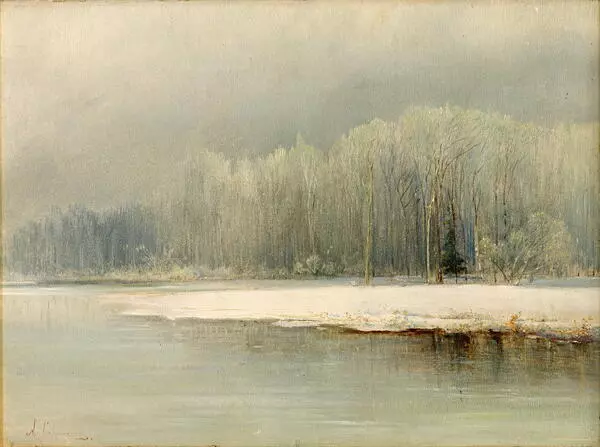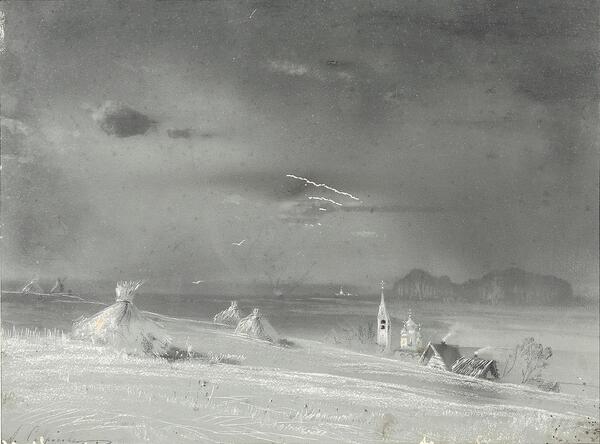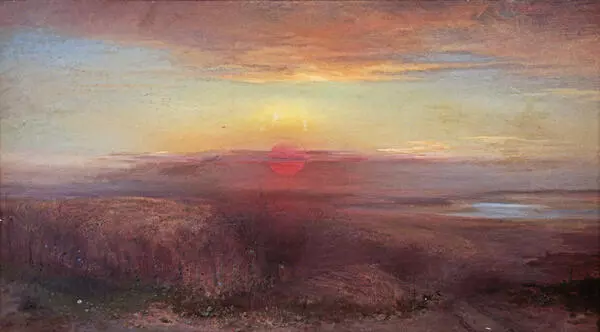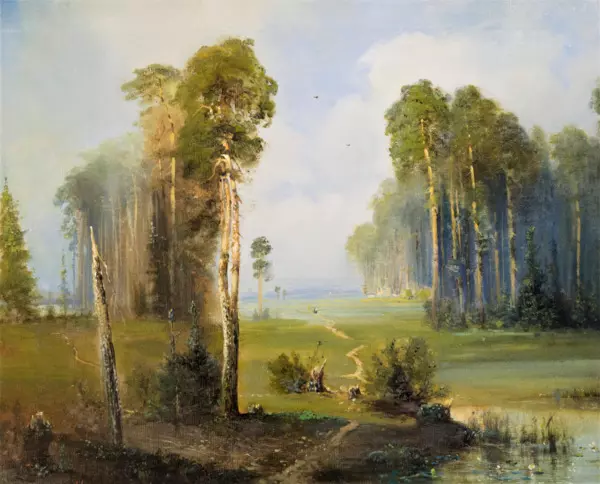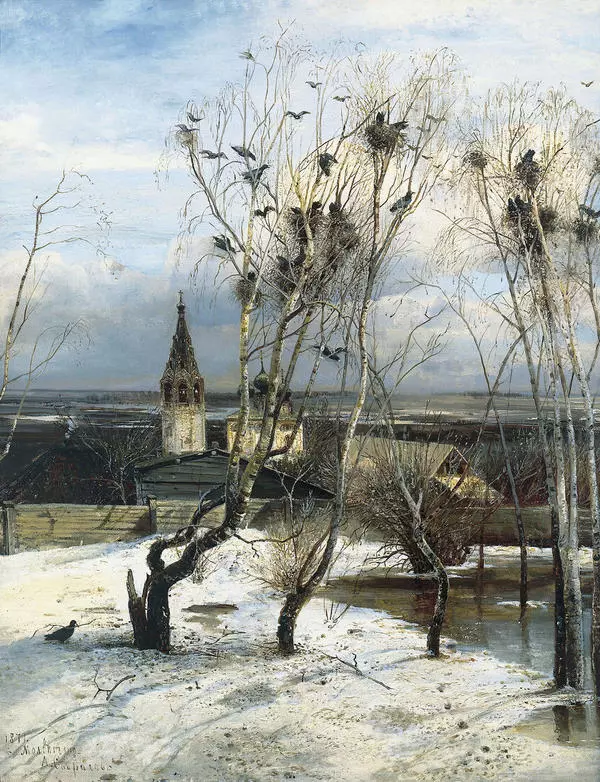Alexei Savrasov painted ‘Autumn. Sokolniki’ in the 80s–90s of the 19th century. The artist created a classic landscape composition characteristic of late romanticism: the background is darkened to highlight the pine trees pictured at centre as much as possible.
Autumn. Sokolniki
Время создания
1880s – 1890s
Размер
96x52 cm
Техника
Oil on canvas
Выставка
6
Открыть в приложении#3
Alexey Savrasov
Autumn. Sokolniki
#2
#5
To impart stately slenderness to them, Savrasov used canvas of elongated shape and contrasting combinations of light, shadows and sizes of trees and shrubs.
#6
It was not the first painting where Savrasov pictured Sokolniki landscapes: in 1870, he was awarded first prize of Moscow Art Lovers Society for his painting ‘Elk Island in Sokolniki’. Entrepreneur and philanthropist Pavel Tretyakov was so impressed by the painting that he immediately bought it for his personal collection. However, the painting did have a chance to travel: in 1871, it was displayed at the first itinerant exhibition, and two years later, at Petersburg Academy of Arts.
#7
Elk Island in Sokolniki. Source: wikipedia.org
#10
Although Savrasov is considered to be one of the most prominent Russian landscape painters, chances were that he might not have become an artist. His father, Kondraty Savrasov, a 3rd guild merchant, wanted his son to engage in commercial matters.
#11
1. View of the Kremlin from Krymsky Bridge in Inclement Weather. 2. View in the Vicinity of Oranienbaum. Source: wikipedia.org
#15
Against his father’s will, Alexey Savrasov entered Moscow School of Painting and Sculpture in 1844, and as early as in 1851, he completed “View of the Kremlin from Krymsky Bridge in Inclement Weather”, the painting that won him his first fame.
#9
The Rooks Have Come Back. Source: wikipedia.org
Three years later, the artist was awarded the title of Academician, and for the first time, his paintings draw the attention of Tretyakov, who bought his painting entitled “View in the Vicinity of Oranienbaum”. In 1862, Alexey Savrasov traveled in Russia and Europe, and in 1871, he completed one of the most famous paintings, his landmark landscape “The Rooks Have Come Back” based on the studies the artist made in Kostroma Province.
#12
Around the same time, life took a tragic turn for the artist’s family with the death of his fourth daughter, who was just a baby. There were other difficulties that plagued Savrasov. He was ordered to vacate his official quarters provided by Moscow Art School, as its management was unhappy with the artist deviating from teaching standards and giving his students too much freedom in their creative work. In 1876, his wife Sophia Hertz left him and moved with their daughters to Petersburg.
In 1882 he was dismissed from his teaching job and started earning his living by doing sketches, most of which were copies of his previous works. Savrasov’s late-period paintings were often filled with gloomy motifs, for example, in his 1887 painting entitled “Landscape. The Village of Volyn”, smoke from the factory covers the nearby church.
In 1882 he was dismissed from his teaching job and started earning his living by doing sketches, most of which were copies of his previous works. Savrasov’s late-period paintings were often filled with gloomy motifs, for example, in his 1887 painting entitled “Landscape. The Village of Volyn”, smoke from the factory covers the nearby church.
#13
Landscape. The Village of Volyn. Source: wikipedia.org
#14
He died in 1897 at the age of 67 in the hospital for paupers in Khitrovskaya Square. The only two people who attended his funeral were Tretyakov and his favourite student Isaac Levitan, who, like Savrasov, is considered to be one of the most famous Russian landscape painters.
#16
Orenburg Regional Museum of Fine Arts
читать дальшескрыть
00:00
00:00
1x
Autumn. Sokolniki
Время создания
1880s – 1890s
Размер
96x52 cm
Техника
Oil on canvas
Выставка
6
Открыть в приложении
Поделиться
